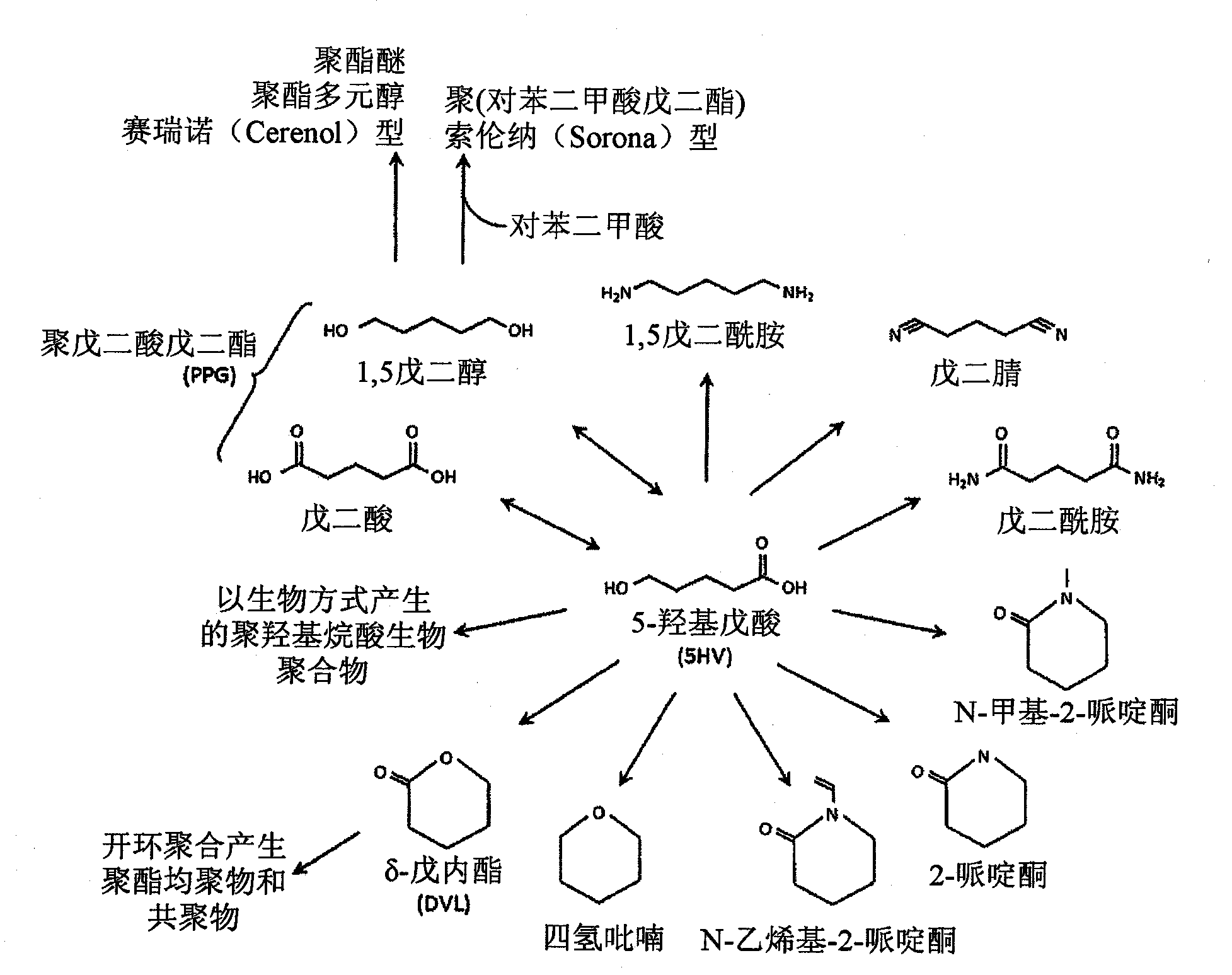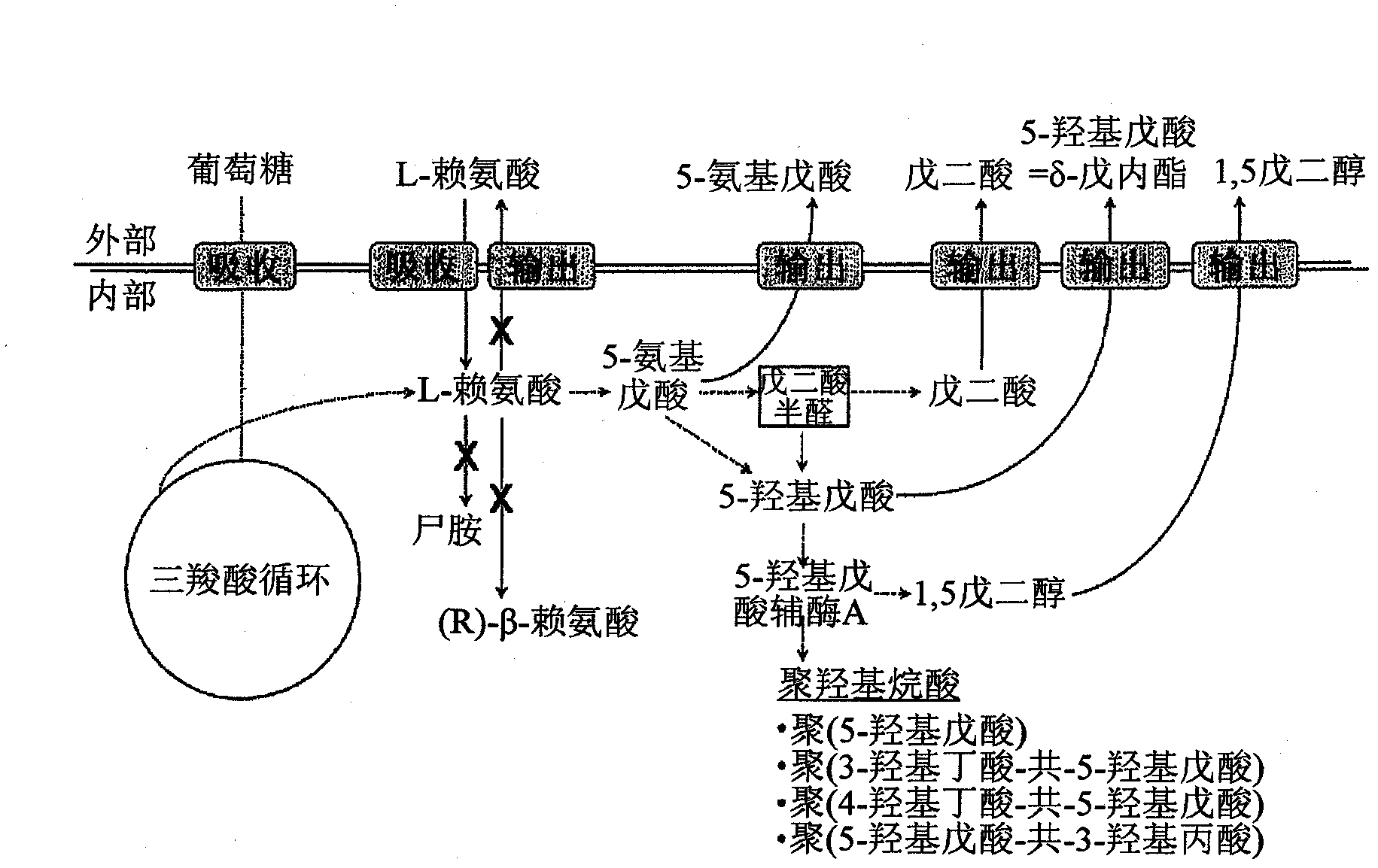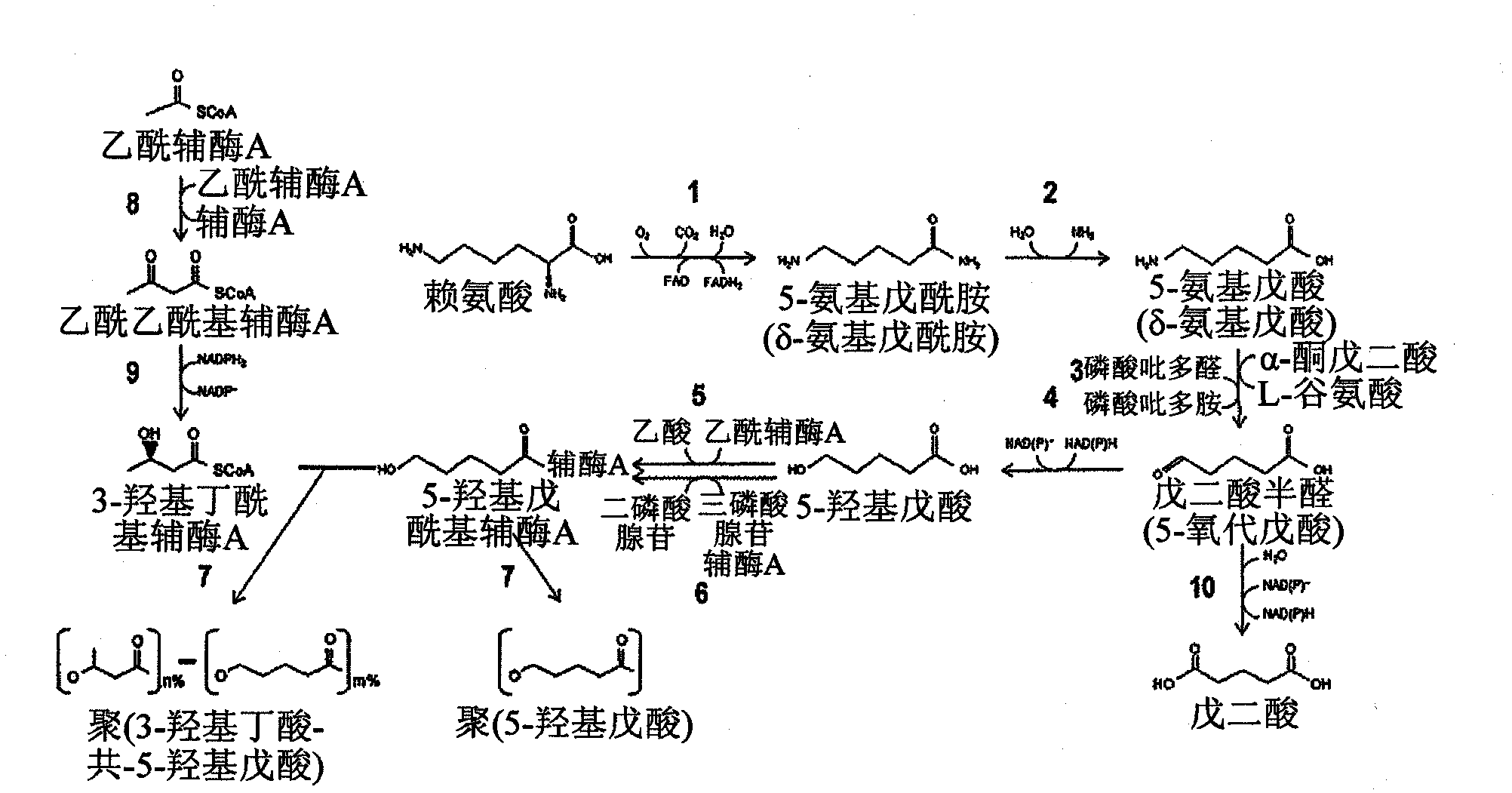Green process and compositions for producing poly(5HV) and 5 carbon chemicals
A technology of hydroxyvaleric acid and polyhydroxyalkanoic acid, which is applied in the direction of genetic engineering, biochemical equipment and methods, and the use of vectors to introduce foreign genetic materials, etc., can solve the problems of expensive and high cost of 5-carbon petroleum substrates
- Summary
- Abstract
- Description
- Claims
- Application Information
AI Technical Summary
Problems solved by technology
Method used
Image
Examples
example 1
[0167] Example 1: Biosynthesis of P(5HV) Homopolymer by Sodium 5-Hydroxyvalerate
[0168] In the first demonstration of the ability to synthesize 5HV-containing PHA, sodium 5-hydroxyvalerate (Na5HV) was fed to E. coli strains expressing CoA transferase or CoA synthetase and PHA synthase to determine the 5HV fed Whether the monomer is accepted and incorporated directly into the P(5HV) homopolymer. Na5HV is synthesized by alkaline hydrolysis of delta-valerolactone (DVL). This procedure involves adding 0.1 M NaOH to 50 mL of methanol with stirring until dissolved. Under vigorous stirring, 0.1 molar DVL was added thereto. The resulting precipitate was dried, dissolved in water, adjusted to pH 8.5, and sterile filtered with a 0.2 micron filter. The saline solution was analyzed on a Waters Alliance HPLC to confirm that all DVL had been saponified.
[0169] Different combinations of CoA transferase / synthetase and PHA synthase genes were tested to find the best combination for P(5...
example 2
[0184] Example 2: Biosynthesis of P(3HB-co-5HV) copolymers from sodium 5-hydroxyvalerate
[0185] The next experiments will illustrate the production of P(3HB-co-5HV) copolymers in E. coli strains capable of synthesizing 3HB-CoA and 5HV-CoA monomers and incorporating them into PHA.
[0186] Strain construction
[0187] The strain used in this example was MBX2641, a derivative of MG1655, containing an operon consisting of Ralstonia eutropha H16 bktB-Bacillus megaterium phaB-kan integrated randomly into the chromosome. For operon integration, pCJ022 ( Strain S17-1λpir (Miller and Mekalanos, J.Bacteriol.) 170 (6): 2575-2583 (1988)) and naphthalene of MG1655, as described below Mating of pyroxacid-resistant mutant MBX1987. MBX1987 derivatives carrying the bktB-phaB-kan cassette in the chromosome were selected on LB plates containing 30 μg / ml nalidixic acid (Nl) and 50 μg / ml kanamycin (Km). Show Nl R Km R One such integrant of the phenotype is preserved as MBX2079. Next, ph...
example 3
[0197] Example 3: Tunable 5HV monomer composition in P(3HB-co-5HV) copolymer and its effect on material properties
[0198] The copolymer composition was adjusted by changing the amount of Na5HV and glucose added to the production medium. Alternative ways to achieve this include (1) feeding different amounts of L-lysine into the growth medium of recombinant cells that can produce 5HV from L-lysine, as shown in Example 6; L-lysine pathway genes are deregulated in recombinant cells that can produce 5HV from glucose via L-lysine, as shown in Examples 9 and 10.
[0199]To illustrate the tunable 5HV monomer composition in P(3HB-co-5HV) copolymers, strain MBX2641 expressing enzymes of the 3HB pathway (bktB and phaB) as well as coenzyme A transferase (orfZ) and PHA synthase (phaC) was used [pFS30]. Parallel cultures of MBX2641[pFS30] were grown in decreasing concentrations of glucose (10, 5, 1, 0.5, 0.1, 0 g / L) or Na5HV (10, 5, 1, 0.5, 0.1, 0 g / L) , and the polymer content was ana...
PUM
 Login to View More
Login to View More Abstract
Description
Claims
Application Information
 Login to View More
Login to View More - R&D
- Intellectual Property
- Life Sciences
- Materials
- Tech Scout
- Unparalleled Data Quality
- Higher Quality Content
- 60% Fewer Hallucinations
Browse by: Latest US Patents, China's latest patents, Technical Efficacy Thesaurus, Application Domain, Technology Topic, Popular Technical Reports.
© 2025 PatSnap. All rights reserved.Legal|Privacy policy|Modern Slavery Act Transparency Statement|Sitemap|About US| Contact US: help@patsnap.com



